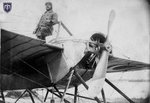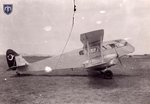- Thread starter
- #61
The Nieuport 6H was the military version of a long series of Nieuport floatplanes started with the Nieuport IV G in 1912. When France entered the war the navy had two Nieuport floatplane escadrilles, one of these was equipped with six Nieuports VI G based at Saint-Raphael and the other was equipped with Nieuports VI H embarked at the seaplane carriers Foudre and Campinas operating on the Mediterranean. Some of these planes were lent to the British. These planes helped the French and British navies maintain dominance over the area, and later conducted some of the early reconnaissance flights over the Dardanelles. But by 1917, the Nieuports were replaced with F.B.A seaplanes and relegated to training duties. Some of these served with the Royal Naval Air Service for floatplane training at Lake Windermere in the UK.























